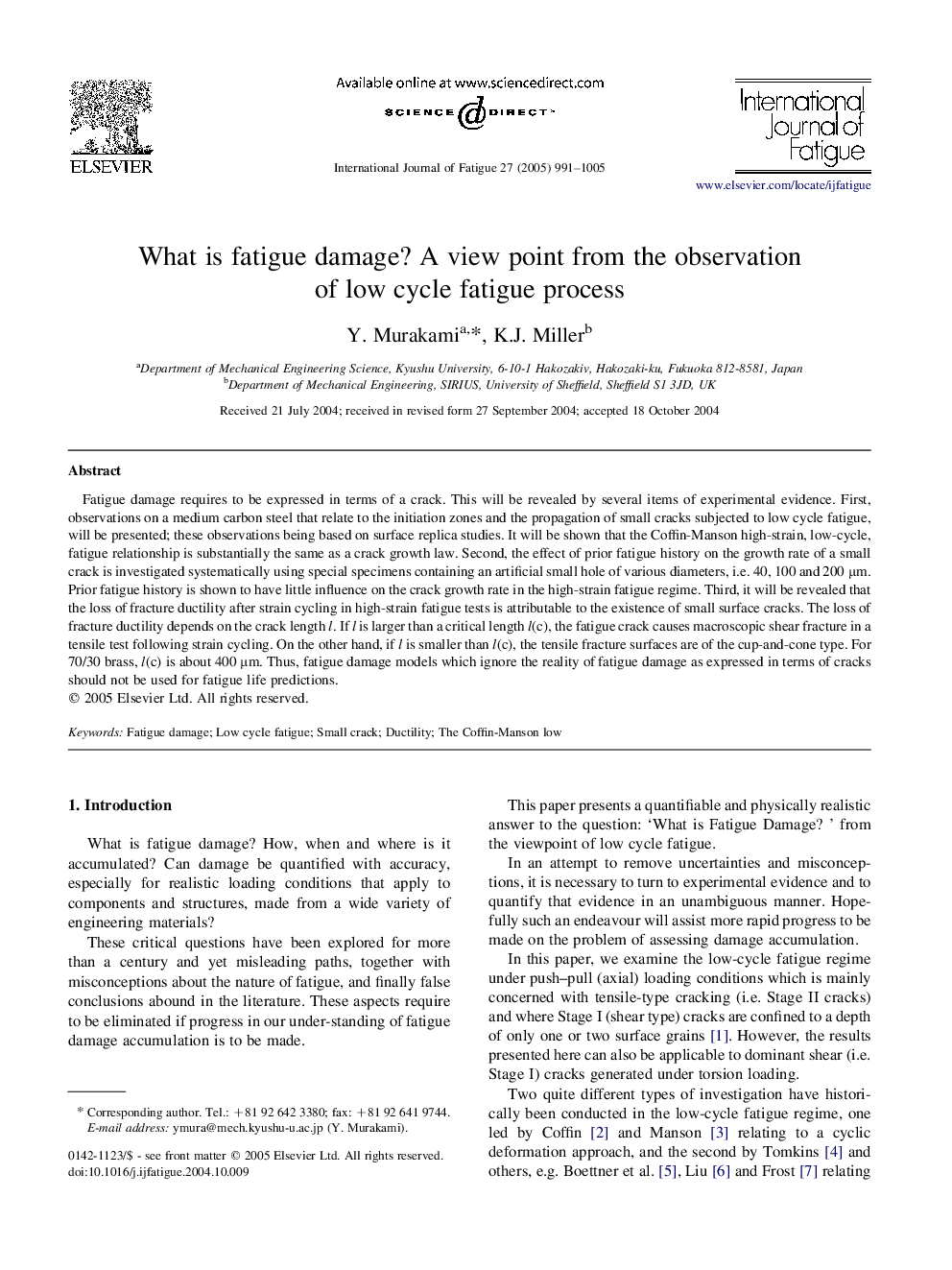| Article ID | Journal | Published Year | Pages | File Type |
|---|---|---|---|---|
| 9703940 | International Journal of Fatigue | 2005 | 15 Pages |
Abstract
Fatigue damage requires to be expressed in terms of a crack. This will be revealed by several items of experimental evidence. First, observations on a medium carbon steel that relate to the initiation zones and the propagation of small cracks subjected to low cycle fatigue, will be presented; these observations being based on surface replica studies. It will be shown that the Coffin-Manson high-strain, low-cycle, fatigue relationship is substantially the same as a crack growth law. Second, the effect of prior fatigue history on the growth rate of a small crack is investigated systematically using special specimens containing an artificial small hole of various diameters, i.e. 40, 100 and 200 μm. Prior fatigue history is shown to have little influence on the crack growth rate in the high-strain fatigue regime. Third, it will be revealed that the loss of fracture ductility after strain cycling in high-strain fatigue tests is attributable to the existence of small surface cracks. The loss of fracture ductility depends on the crack length l. If l is larger than a critical length l(c), the fatigue crack causes macroscopic shear fracture in a tensile test following strain cycling. On the other hand, if l is smaller than l(c), the tensile fracture surfaces are of the cup-and-cone type. For 70/30 brass, l(c) is about 400 μm. Thus, fatigue damage models which ignore the reality of fatigue damage as expressed in terms of cracks should not be used for fatigue life predictions.
Related Topics
Physical Sciences and Engineering
Engineering
Mechanical Engineering
Authors
Y. Murakami, K.J. Miller,
